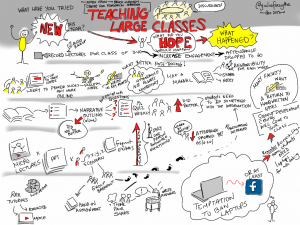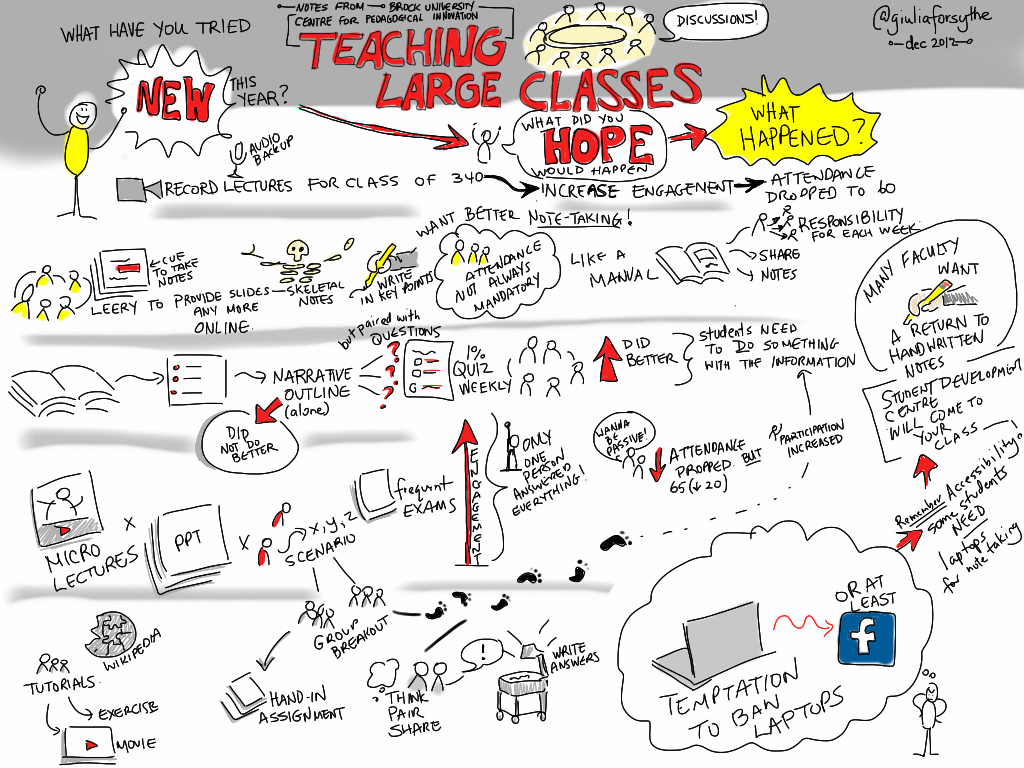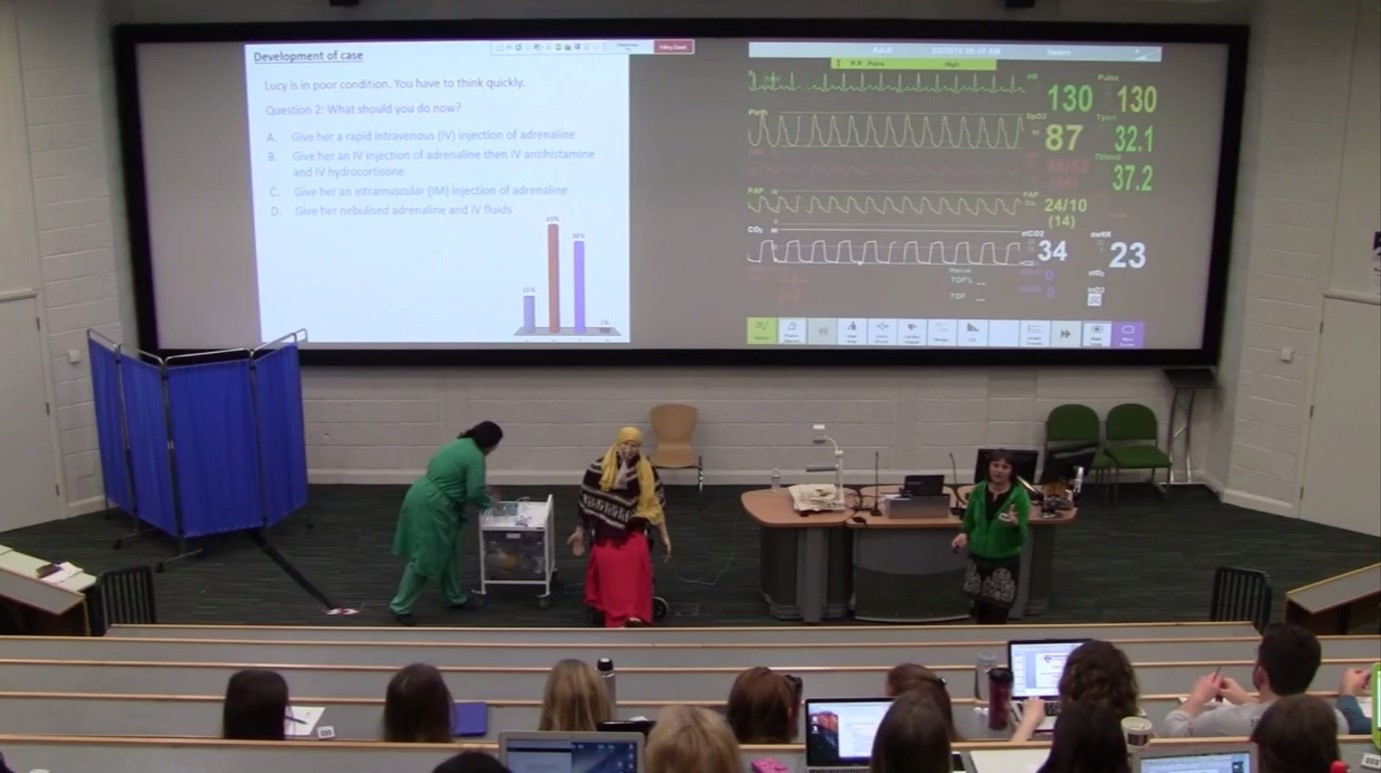-

Teaching Large Classes Giulia Forsythe CC-BY-SA https://www.flickr.com/photos/gforsythe/8261536706 How can you engage large student cohorts in the classroom/lecture theatre?
- And how could you maintain those connections when the lecture is over?
- How do you make meaningful connections with all your students?
Aimed at academic and professional services staff these practical workshops draw on examples of effective practice from within the University and from outside. Ranging from using technology effectively, and utilising basic acting techniques, to creating accessible materials for everyone, we share ideas and tips you can take away and try with your large groups tomorrow.
You can attend all three, or choose the ones that best meet your needs
Creating connections: Managing large groups in the lecture theatre
Tuesday 9th May 12.00-14.00, G.07 Daysh Building
In this workshop we share tips and tricks for how we can effectively manage large groups in the lecture theatre, You’ll be able to try out some techniques for yourself in this interactive session, with case studies from colleagues from across the University and some practical exercises ranging from maintaining audience attention and using lecture theatre technology to how to stop your voice giving out as term progresses.
Staying connected: Facilitating large groups outside of the lecture theatre
Tuesday 19th September 12.00-14.00, Herschel Learning Lab, Herschel Building
The recent NUSU report on the Teaching Excellence Awards contained some gems of information from students, one of which was that they really value the activities before and after a lecture. But how do you build meaningful activities and maintain attention outside of the lecture theatre? This workshop looks at ‘the lecture sandwich’ where we share tips and get some hands on experience of using Blackboard, ReCap discussion boards etc to help build collaborative learning before and after the lecture. We also look at boundary setting and expectation management with email and in discussion boards.
Connecting everyone
Date tbc (pending timetabling)
Drawing on inclusive learning principles this cluster based hands on workshop focuses on learning for all and reaching everyone on your large group. We share tips on using multiple communication channels, and how using module handbooks, reading lists, well structured documents effectively can help get to hard to reach students.
Further information and bookings
For more information and to book: www.ncl.ac.uk/ltds/about/training/feelingconnected/
You can choose to come to all three or just pick the ones that best suit your needs. And bring a sandwich with you, if you like.




